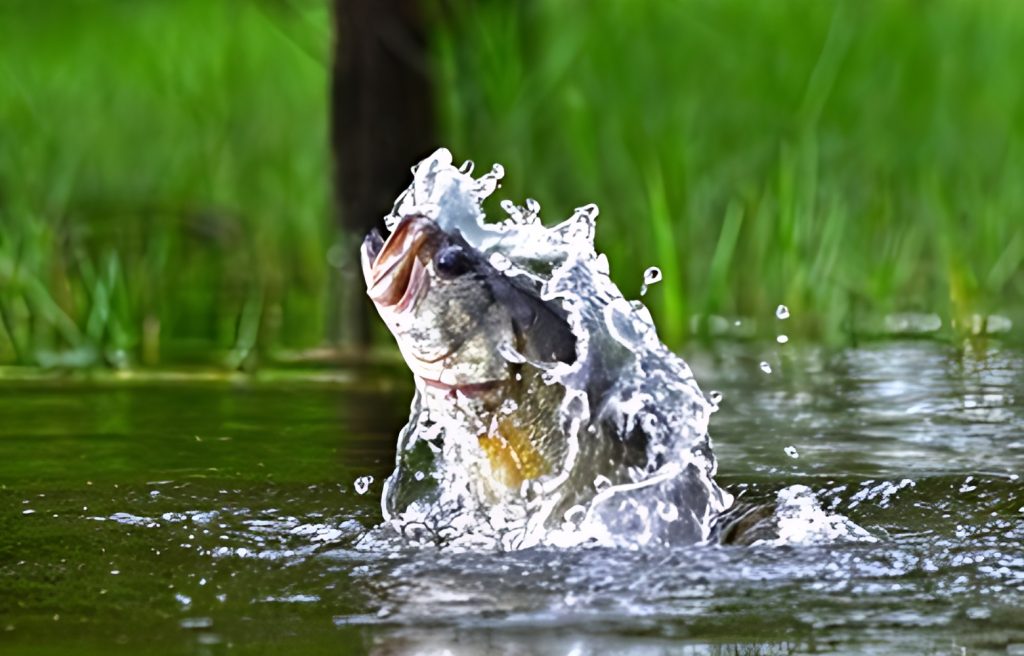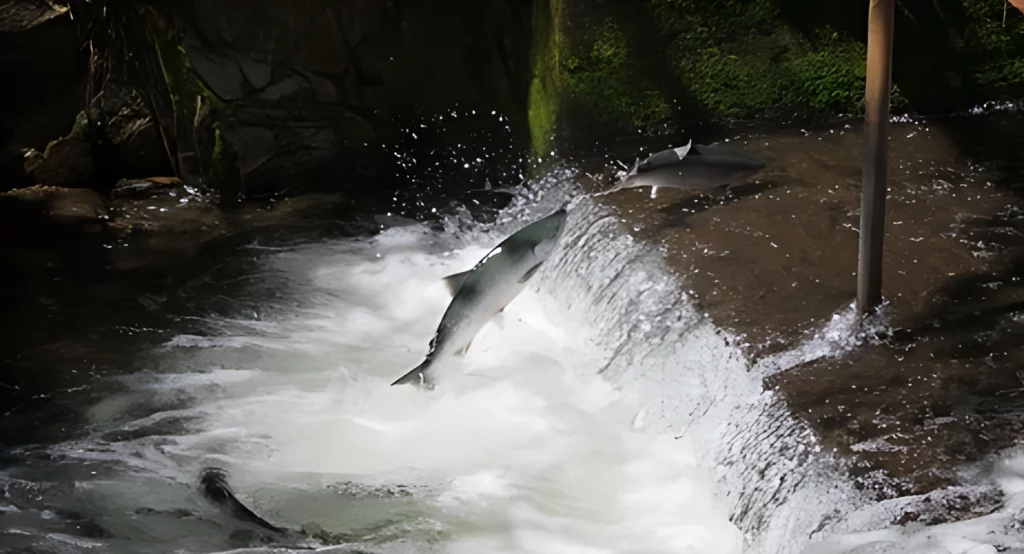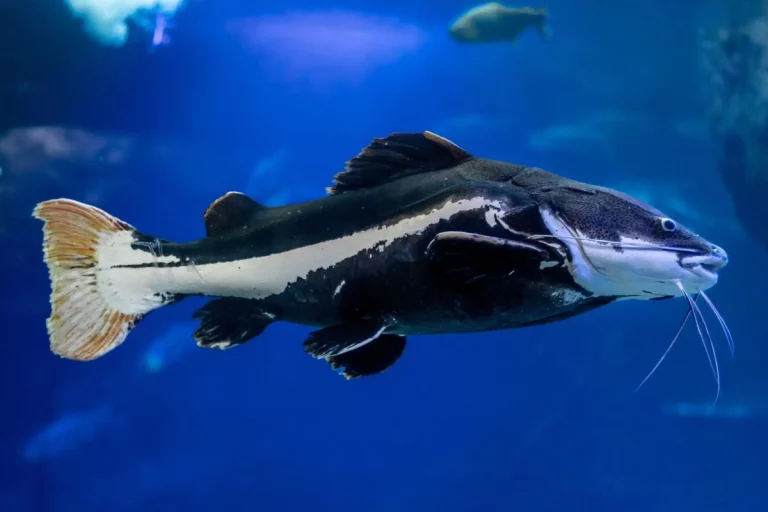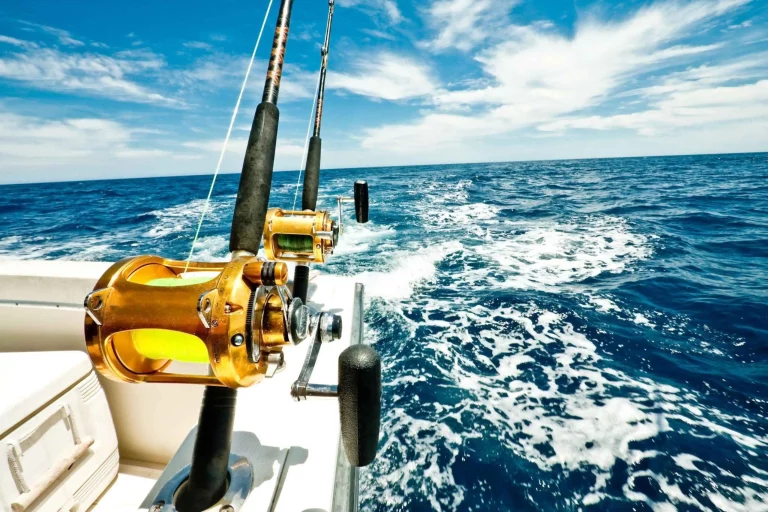Why Fish Jump Out of the Water

Have you ever witnessed a fish jump out of the water? Wherever there is sand or water, including beaches, lakes, rivers, etc.
Have you ever given it any consideration? It’s something you’re well-versed in it. Humans are naturally interested. They’re obsessive in their quest for knowledge. Some of these are evident. I assure you that there are several scientific explanations as well.
Marine biologists and other professionals in the area have looked at this issue. They’ve come up with some compelling arguments. In addition, many people here are ardent naturalists. Do you believe that scientists have learned anything from their fishing expeditions?
I’m sure you’re curious about why fish jump out of the water in the first place.
To pique your interest, I’ll provide a list of those reasons. Let’s work together to figure out what’s happening with the leaping fish.
Contents
- 1 Reason #1: To dodge the predators
- 2 Reason #2: To get food
- 3 Reason # 3: Debugging or external parasites
- 4 Reason #4: Decrease in oxygen levels
- 5 Reason #5: Procreation
- 6 Reason #6: Force of Life
- 7 Reason #7: Romance
- 8 Why Do fish jump out of the water in ponds and lakes, and no one can get a bite?
- 9 Conclusion
Reason #1: To dodge the predators
In our world, the hunter is the most fundamental idea. Fishers of larger sizes prey on smaller ones. If a prey fails to defend itself, the food chain will fall apart.
Marine life relies heavily on fish as part of its feeding chain. The battle between predators and prey continues to go on. Because of this, you must realize that the fish will do anything to defend itself. For them, it’s a serious business.
It’s not always a game of “cat and mouse” when fish jump out of the water.
There are times when the predatory fish needs to look for prey. During some day intervals, especially when they are starving, fish try to consume other fish.
The majority of their attacks are short-term pursuits. The majority of the cases come out of nowhere. In their strikes, they take advantage of the chance. The prey uses its innate instincts to defend itself. If they can get out of harm’s way quickly enough, they have a good chance of surviving. Small to vast schools of fish like to congregate. The school of fish adopts a collective defence technique to shield themselves from threats.
Reason #2: To get food
The primary motivation behind many species’ remarkable accomplishments and techniques is a need for food. Fish, too, are not exempt.
There is no food in the water here. However, it is either hovering just over the water’s surface or flies all over. When confronted with this type of food, fish may resort to more creative feeding methods.
You’ve probably seen videos of a bass jumping out of the water to pursue aquatic insects like dragonflies. If you want insects, you may try trout.
Low-flying mosquitoes are easy pickings for them. The Amazon basin’s monkey fish are responsible for the most spectacular leap. To grab their prey, they may leap out of the water. It helps them grab food more rapidly, and their mouths have developed to have vast openings. Insects, birds, bats, crabs, etc., are among their prey.
Insects are caught by the silver arowana while perched on a branch or a leaf. A meter or so above the water’s surface is a reasonable estimate. Films like these could be familiar to you.
Reason # 3: Debugging or external parasites
Some fish jump out of the water for no apparent reason. They occasionally do this. To rid themselves of foreign parasites, several biologists have observed and hypothesised.
You’re well aware that a fish’s mouth and fins are ineffective tools for removing parasites. It’s a desperate act of desperation that causes them to jump out of the sea.
Next time you see a fish leap out of the water, assume it’s a debugging procedure to free the fish of bothersome parasites.
Reason #4: Decrease in oxygen levels
When it comes to surviving, instinct is aware of the need to do everything it requires. In a degraded habitat, fish have no choice but to break the surface, searching for food and shelter. Some fish have adapted to seek out better life circumstances outside of the water due to natural selection. That is correct. Oxygen is something they’re desperately in need of. Therefore, it’s not surprising that they’re looking for it.
The lungs of the African sharp-toothed catfish have developed so that they may breathe the air outside of water for extended periods. In this way, they can survive in an oxygen-starved environment.
Reason #5: Procreation

Fish migrate to breeding sites for a good purpose, in my opinion. To get to the nursery, some fish make remarkable leaps.
Wow, this is a fantastic display of power and endurance! Coho, Chinook, Sockeye salmon, and other Pacific salmon species have an inbuilt impulse to reproduce.
Salmon are well-known for their impressive aerobatics, but other fish perform the same thing, although in a more subdued fashion. Some fish may reach about two meters in height in the spring, which is impressive.
Reason #6: Force of Life
Yes, that’s what I think to respond to your comment. These fish are positively teeming with energy and vitality. In their twenties, they are in good shape. They seem to be in healthy condition. They need to find out whether they’re doing it to have a good time, impress others, or just for kicks.
Have you seen any children at the playground? They appear to be bursting with vitality. Like humans, fish are bursting with energy, and the sheer joy of living is causing them to leap into the air spontaneously.
Reason #7: Romance
Various fish species congregate in large schools in the Gulf of Mexico. The event occurs at a specific time of year. In a series of leaps, the fish hurl themselves into the air. Both sexes of the fish leap together while mating. They are in search of a romantic partner.
These locations resembled nursery grounds for many species, according to researchers. Near the jump area, they found several baby fish feeding independently. To let other fish of the same species know that they’re close, males and females of a species will leap. As a result of the gathering, additional fish arrive at the jump location and begin to participate. Romance blossoms!
Why Do fish jump out of the water in ponds and lakes, and no one can get a bite?
Fish jump for various reasons, and it’s nearly impossible to find out why.
Make changes in your approach and adapt your strategy according to the scenario to get a bite. Furthermore, there’s also no chance that you will be successful.
Because fishermen frequently encounter this issue while fishing for carp, I will share a few ideas with you. It can also apply the information presented here to other types of fish.
The next time you notice fish jumping out of the water, use one of these methods:
Change the fishing technique (to surface fishing)
It’s a sign that the fish are near the surface if they’re leaping. Anglers commonly place Baits on the bottom or in the center of a water column. Position your bait as close to the surface as possible.
Carp and other fish species can occasionally scavenge for food on the surface, which is rich in insects and other organisms. Those who fish for trout or similar species may want to try fly fishing.
Fishing for carp on the surface requires a range of baits, all of which anglers may use. Make your bait stand out from the rest of the food in the area, and carp will eventually get curious.
Change the bait (to bread, boilies, etc.)

Carp fishers needn’t worry about changing their baits.
Bread, boilies, maize, pellets, and dog biscuits can all be used to capture carp. Cheap and easily accessible, you may use these baits for many different purposes.
When a carp looks indifferent in your baits, you may always add some ingredients to them.
Surface baits like bread, maize, or pop-up boilies should be your go-to fishing options. Although that is an alternative, many anglers use boilies and corn together.
Some baits will be more appealing to carp, and the typical approaches will not work if the fish are acting suspiciously. You’ll have to adapt and experiment to determine what will pique their interest. The secret to winning is that there are a lot of different options.
In addition, remember to prebait, especially when you’re targeting carp. You might test a few alternative spots on the same lake or pond for the best results.
Change the rig (to “zig-rig”)
This decision can make all the difference in whether you succeed or fail.
Zig-rigs can help you accurately position the bait where you want it. The zig-rig will help you make the adjustments you need, as you’ve already deduced from these pointers.
The zig-rig appears as a floating object. A buoyant bait is attached to the end of a long hook link. You may use even a tiny amount of buoyant foam to maintain a non-buoyant bait in the air, like a pop-up.
With zig-rigs, you can precisely control the depth of your bait presentation. It is most often used to fish in the center of the water column, but you may raise it to get a better look at jumping carp if you so want.
Change the location (be mobile)
When the fish are acting normally, every fisher knows precisely where to go for carp. But what happens when the fish are acting erratically and bouncing around?
Change the location if you have the option to do so. Be on the go. Go somewhere if you don’t observe any activity in your current location. There are at least a few nice spots in every body of water. If the fish act this way, you may want to venture into areas you usually wouldn’t.
When you are still looking for the fish, don’t look in the usual hiding spots like caves or underwater structures.
It’s a cinch whether you’re angling from a boat or not. If the water is clear, cross the lake and study the fish before determining where to set your hook.
Enjoy the experience (smile)
Occasionally, a fish refuses to bite. You’ve done everything and still haven’t had a single bite, so keep your spirits up.
You’ll gain helpful knowledge if you’re a novice by trying new things.
Whether you’re fishing alone or with a group, you end up making the most use of your time in the field. More than just catching fish after fish is part of the fun of fishing.
However, you will at least know which strategies don’t work in a particular case.
Conclusion
There is a reason why fish jump out of the water, and you’ve seen it.
Why do fish leap? Can you think of any reasonable explanations for why fish jump? Based on our observations, we’ve tried to explain why this is the case. Scientific evidence does not support all of these justifications. These are merely educated guesses, after all.
Scientific observations and scientific techniques let us learn more and more. However, there is much more to be experimentally verified. Many animals’ behavior is still a mystery to us today for various reasons. We’re in a position to make educated guesses and draw some conclusions right now. To back up the above assertions with research and scientific explanations, we need to put in a lot of effort.
While we wait, we may take pleasure in the fish’s antics.





